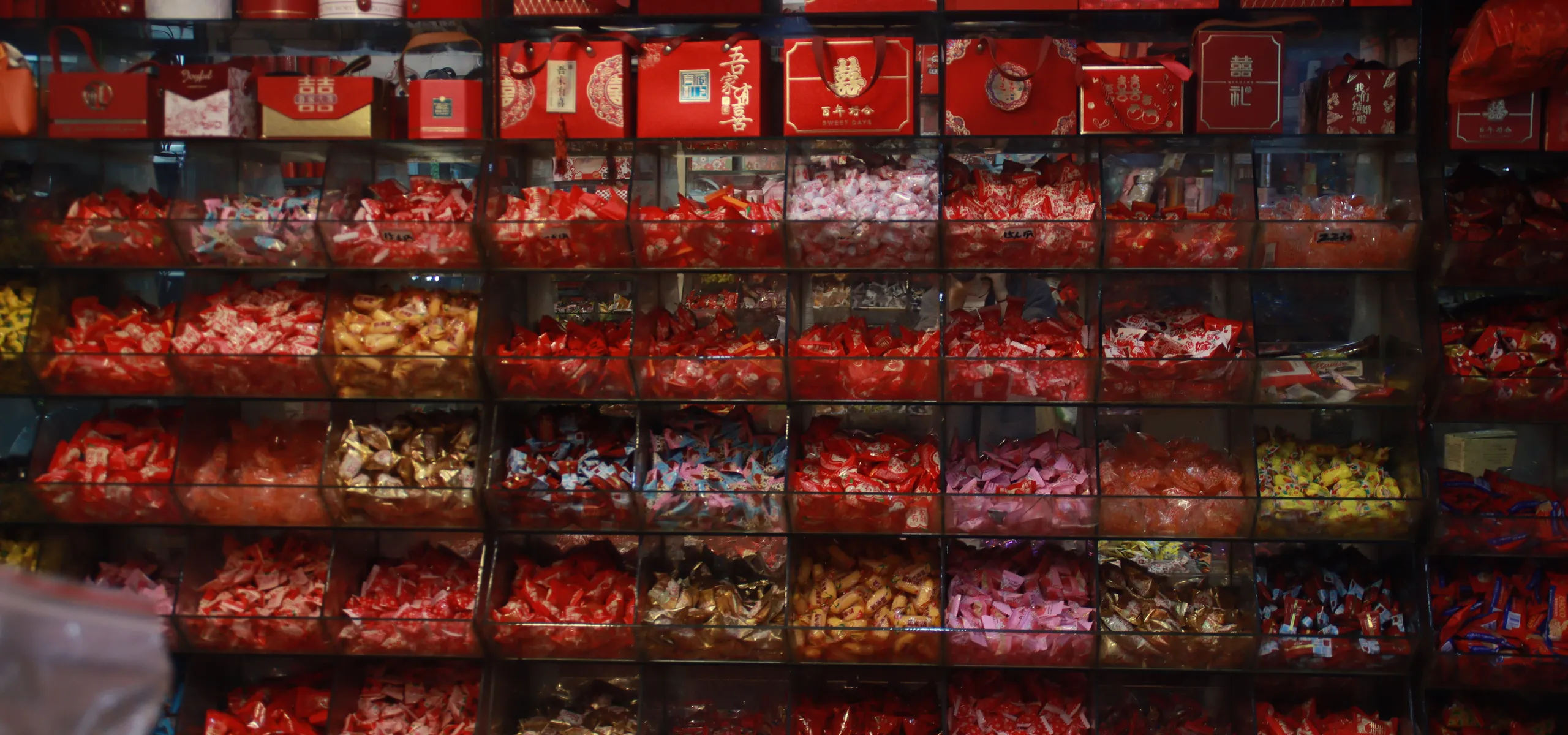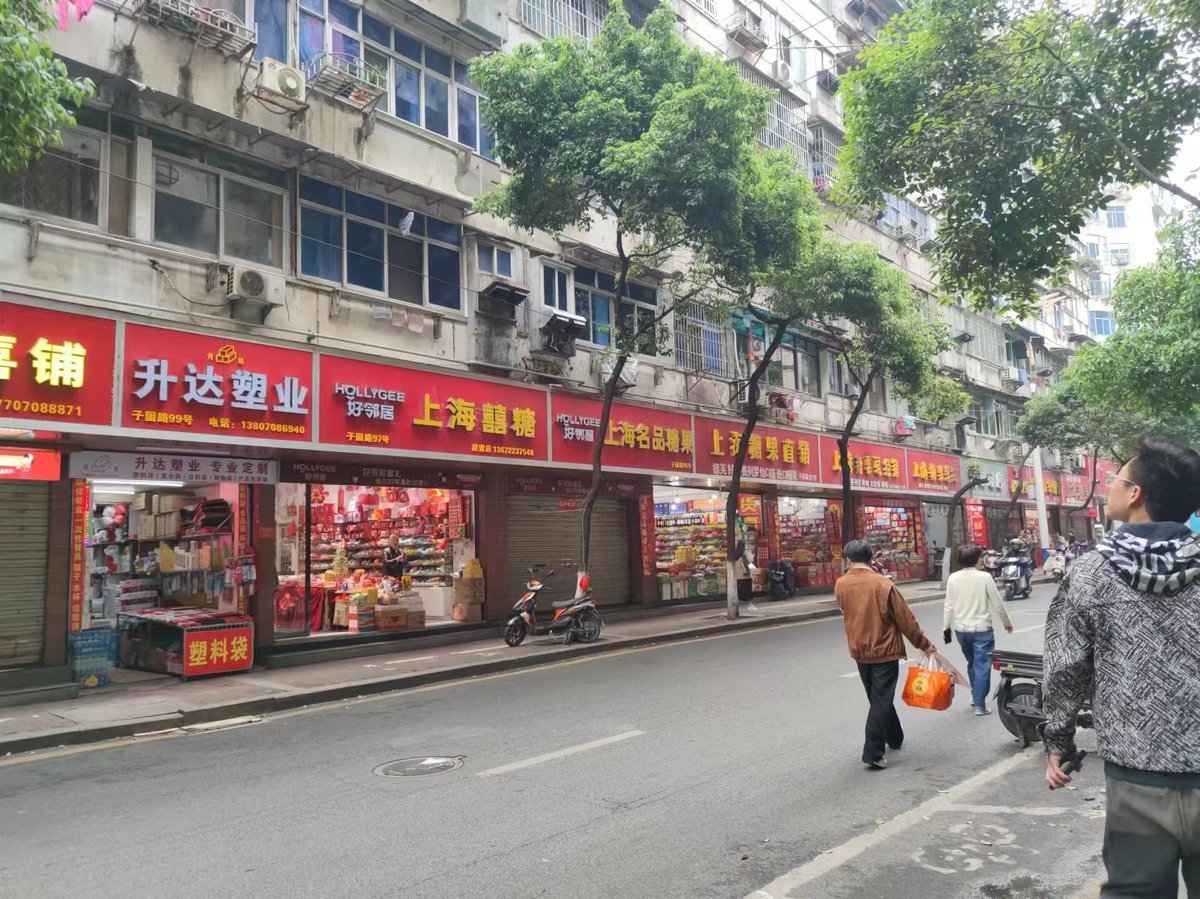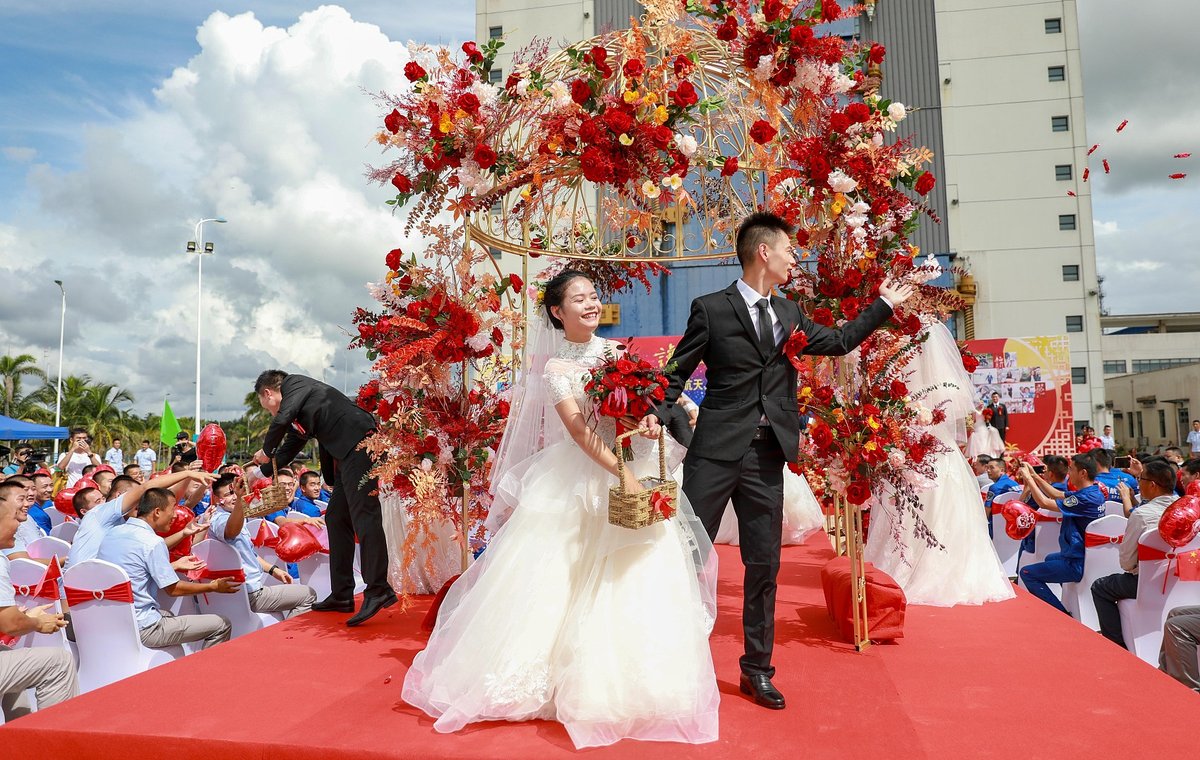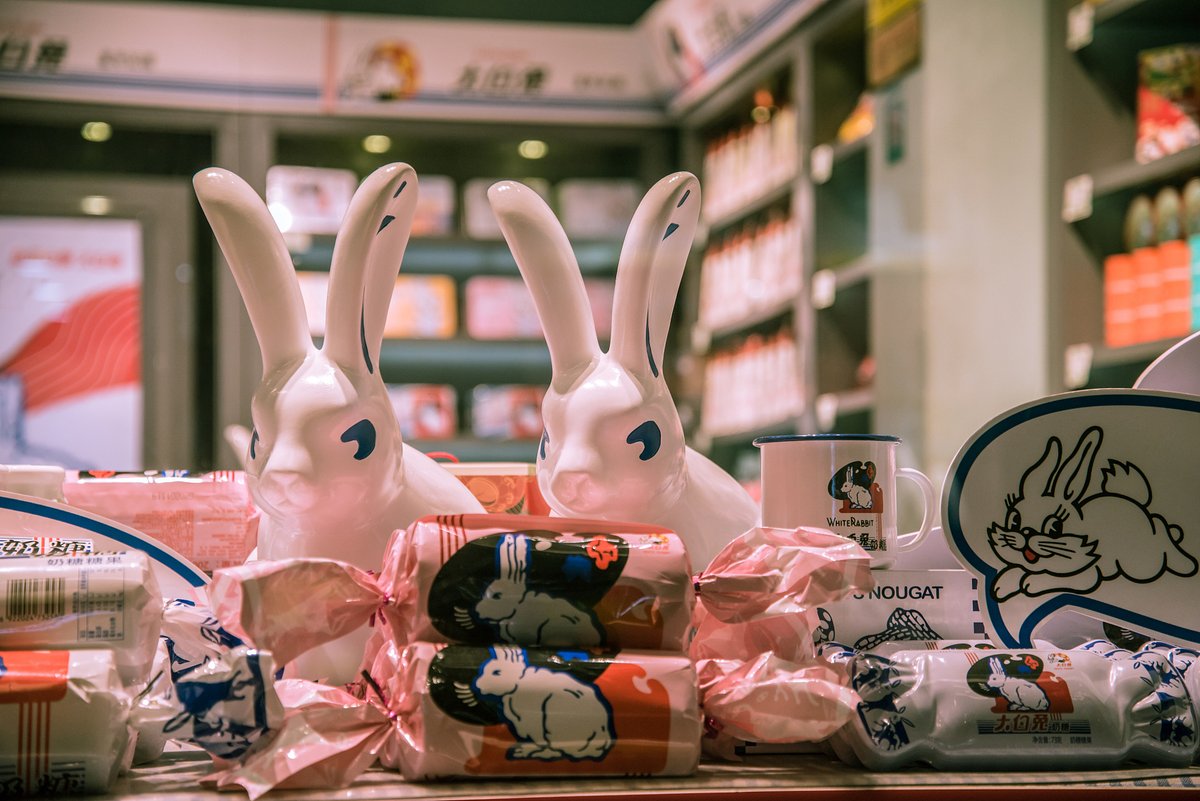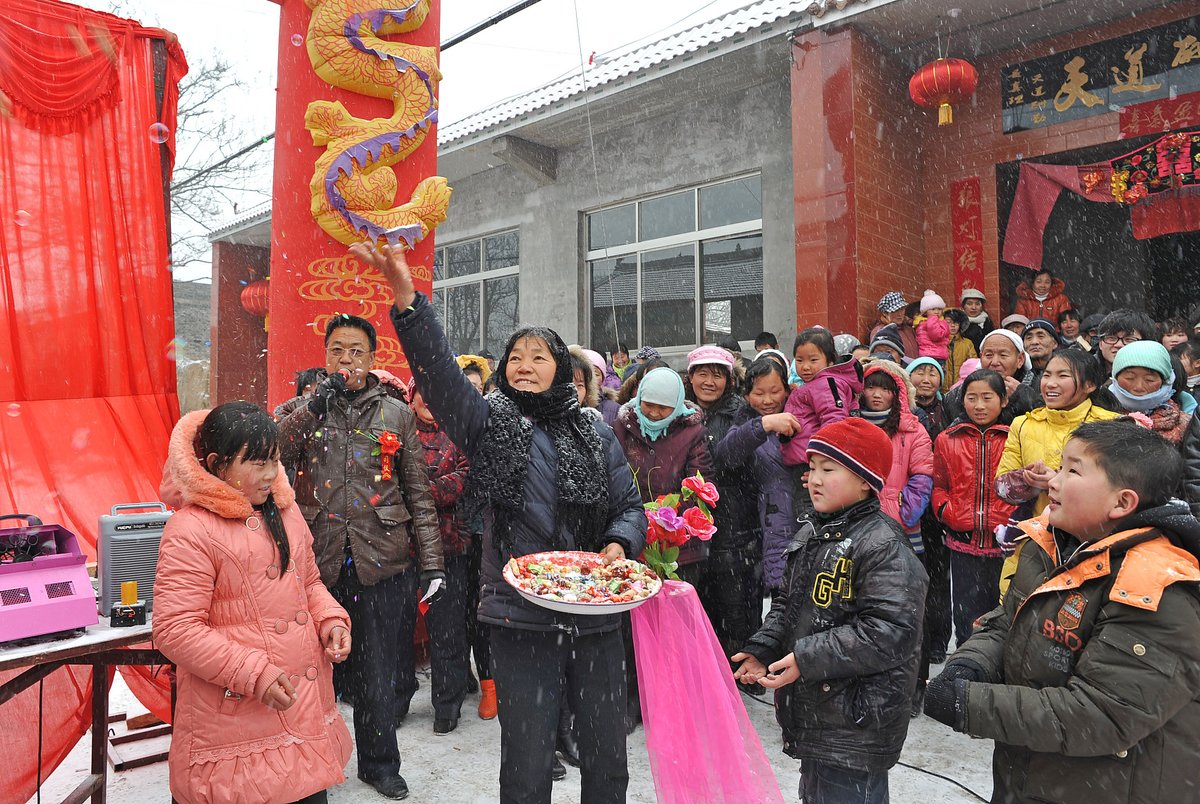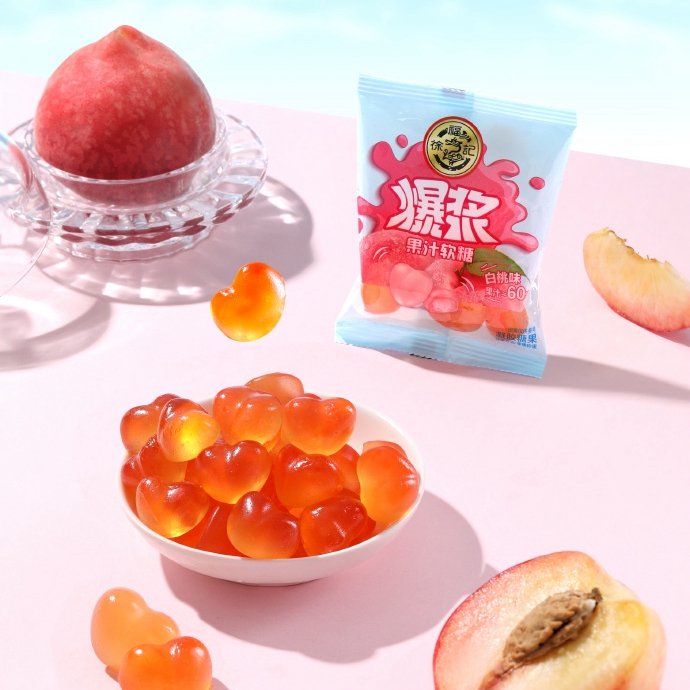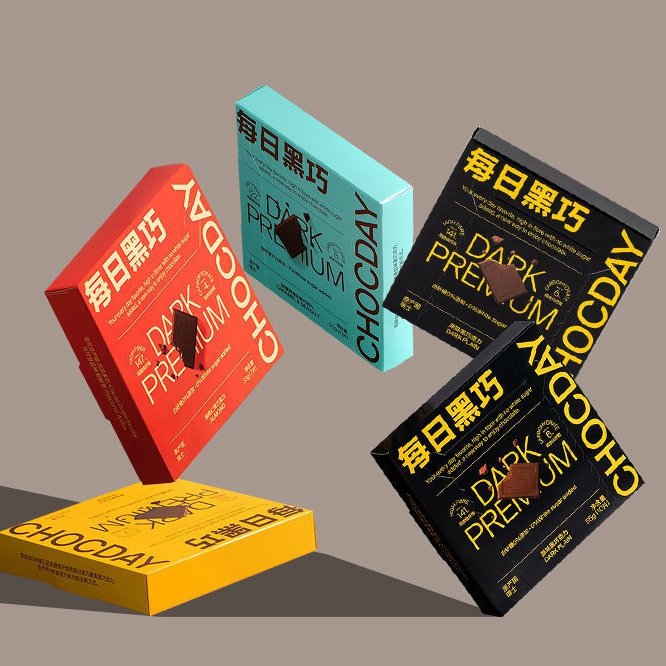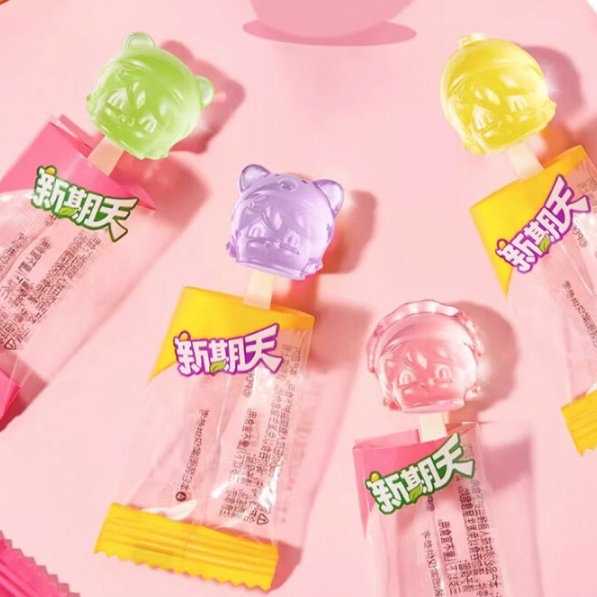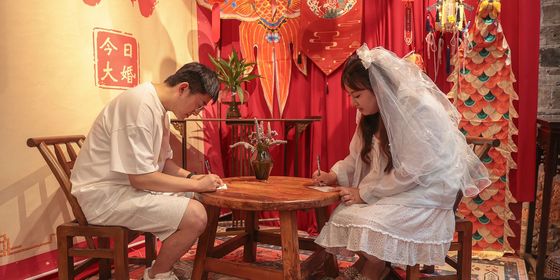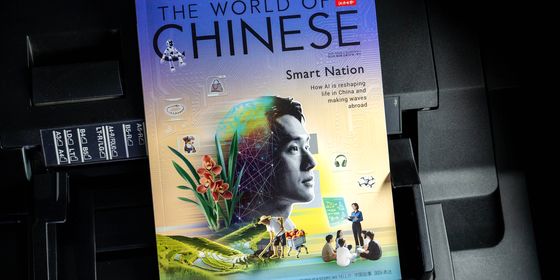As young Chinese put off tying the knot, traditional wedding candy sellers feel the pinch
Young people in China aren’t tying the knot—at least not like they used to. In 2013, 10 million couples said “I do.” By 2022, this figure had dropped to less than 7 million. The number of weddings has only started to pick back up in 2024, the auspicious Year of the Dragon.
The decline in marriage rates has taken a significant toll on the economy. The sweets sector is one of the casualties. Retailers of xitang (喜糖), literally “auspicious candy,” which is given out at milestone celebrations in Chinese culture like weddings and graduation parties, now make their living by catering for events such as banquets for students who’ve passed examinations.
Alongside the decline in marriages, consumers today are also choosing low-sugar diets over sugary snacks. If wedding favor bags contained 28 candies per bag in the past, guests today might find just eight.
But sweet times aren’t over, not if the candy industry can help it. With new flavors and fashionable designs, wedding candy retailers are striving to regain the favor of young consumers.
No more sugar for Zigu Road
On a windy, rainy day in Nanchang, Jiangxi province, Zigu Road was almost empty. Xu Guoling was impervious to the weather. The 62-year-old sat in her candy shop, leaning against the table and snacking on melon seeds. Behind her, the shelves were well-stocked with sweet treats wrapped in red paper.
“No wedding candy shop could close its doors this time of year! May is the high season for weddings. An umbrella shop would be happy if it rained every day, right?”
Zigu Road is the hub of Nanchang’s candy trade. It was named after a writer from the Northern Song dynasty (960 – 1127), and Marshal He Long (贺龙) stationed his troops here during the Nanchang Uprising of 1927.
In the 1980s, over 20 wedding candy vendors gradually set up shop in Zigu Road. The location was conveniently close to a series of cultural attractions in the Jiangxi provincial capital: Wanshou Palace, the Provincial Peking Opera Troupe, the Provincial Puppet Troupe, and the Provincial Drama Troupe.
Xu’s shop only has one rolling shutter door, which she opens daily to welcome customers, rain or shine. She’s cranked it open each morning and closed it each night for over 20 years.
These are lean years for her line of business, but she’s also seen the heyday. A fellow shop owner next door chimes, explaining that, during the boom years, they would make 80,000 yuan revenue a day in the peak wedding season. Mothers-of-the-bride could easily burn thousands of candies for the upcoming celebrations. Wedding sweets were about the family’s honor, which is a powerful force in Chinese culture.
Learn more about marriage in modern China:
- Before Forever: The Rise of Prenuptial Agreements in China
- Talk Your Way Through a Chinese Wedding
- Breakups to Makeups: Why Divorce Is Getting Harder
However, those sweet memories belong in the past now. Xu suggests three main reasons for this. To begin with, there simply aren’t that many weddings anymore. Secondly, weddings were hit hard by the Covid-19 pandemic, with lasting effects. Thirdly, brick-and-mortar shops simply can’t compete with e-commerce.
There are numbers to back up Xu’s theories. Jiangxi ranks among the top 10 provinces and cities with the lowest marriage rates in China. The 2023 edition of the China Statistical Yearbook, compiled by the National Bureau of Statistics, put the marriage rate (obtained by dividing the number of registered marriages by the total population that year) in this south-central province at 4.65 percent in 2022, with only 210,000 couples registered for marriage. Guangdong province in the southeast, boasting the highest marriage rate in the country, saw 573,100 couples tying the knot that year.
These young couples would rather shop online than stroll down Zigu Road. “There’s not a single item for the wedding that I didn’t buy online,” says Kuang Jia. Kuang, who was born in 1995 and married in October last year, explains that, initially, she had meant to purchase a few items to decorate her apartment, but hadn’t anticipated how busy she’d be as the big day approached. In the end, everything came from online shops—invites, balloons, lace, bedding sets, her wedding dress, and, of course, candy. “I’ve been to other people’s weddings and they had the worst candy. So I chose to shop online to get the kind of sweets I actually like.”
Her Douyin (China’s version of TikTok) feed is still dotted with recommendations for wedding products. Big data has followed her entire marriage journey, from her engagement to her wedding day.
Xu is keenly aware of the competition. “We’ve been hard hit by online stores. A small business like mine just can’t carry such a wide range of candies.” She shakes her head and continues stacking candy boxes.
While e-commerce has made a dent in the market, most wedding candy trade remains offline. According to the 2022 edition of the China Snack Industry Research Report, published by research company MobTech, snack shops, supermarkets, and convenience stores still account for 83 percent of the industry’s sales channels.
Offline stores provide a visible, tangible, and almost ritualistic experience. While customers can fulfill their daily snacking needs online, going to the store mentally prepares them for the solemn milestone of a wedding.
Yet candy shops on Zigu Road are still struggling, mirroring the whole sector nationwide. So why are wedding candy shops really falling out of favor?
Shifting taste
Xu has been at the forefront of her business for two decades, but Chinese wedding candy has a longer history. This tradition can be traced to an iconic domestic candy brand—White Rabbit candy from Shanghai.
In the 1930s, milk-flavored toffees imported from the UK inspired Shanghai businessman Feng Boyong (冯伯镛). He created the ABC Mickey Mouse candy, the precursor of today’s White Rabbit.
By the time the PRC was founded, ABC candies (renamed “White Rabbit” in the ’50s) were already an intrinsic part of the Shanghainese childhood. It also found favor with a more grown-up crowd—brides- and grooms-to-be. There was a popular saying: “A wedding without White Rabbit candies is a wedding in vain.”
And yet, winning the hearts of consumers was far from easy. To begin with, candy—even White Rabbit—was a luxury for ordinary Chinese before the reform period. It had to be bought with vouchers. Indulging in a piece of candy was sure to sweeten a child’s memories, long after the treat was gone.
In addition, sugar production in China remained unstable well into the 1990s. To supplement the domestic supply while making a political statement, China began importing sugar from Cuba in the ’60s. Some Chinese born during the ’80s still have memories of snacking on Cuban sugar cubes.
After China’s market reforms, national sugar production grew rapidly, and the country became a top global producer. This provided the necessary raw materials for the candies served at wedding banquets. Many candy companies in China were founded in the 1990s, such as Sister Ma, Golden Monkey Milk Candy, Hsu Fu Chi, Wowo, and Chun Guang.
Local customs and rising income levels helped shape the market, and wedding candy is a window into wedding traditions across China. In affluent southern regions such as Jiangsu, Zhejiang, and Shanghai, brides and grooms typically gave each guest a small, exquisite box of candy to take home from the celebration, costing about 10 yuan each. With an average of 200 to 300 guests, the newlyweds are looking at an average expenditure of 2,000 to 3,000 yuan on candy alone, which translates into approximately 40 percent profit for the catering company. It’s no surprise that 70 percent of the wedding candy retail business is concentrated in these regions today.
Northern couples may not have such a fat purse, but nobody’s going home without a sweet aftertaste. At weddings in northeastern China, known for their hospitality, platters of loose candy are placed on each table for guests to share, while honor-bound families in Shandong province splash on giant boxes containing various kinds of sweets.
But as younger couples’ views on marriage evolve, their taste in wedding candy has changed. While they still stuff even numbers of sweets in wedding favor bags for good luck, they are more likely to associate candies with obesity, rather than prosperity. Old-school brands, with no novelty or special characteristics to distinguish them, have been hit especially hard.
Unlike previous generations, parents are less likely to oversee every step leading up to the wedding. In the past, guests used to get an assortment of hard and soft candy, fruit-flavored bonbons, and lollipops. Weddings for young couples today, on the other hand, favor a DIY approach with plenty of customized favor bags and packaging to match. They are likely to contain snacks that youngsters enjoy day-to-day: think chocolate, jellies, nuts, and cookies.
High-end demand is concentrated in major cities, where chocolate lovers, for instance, will usually opt for overseas brands such as Hershey’s, Dove, Ferrero, and Lindt. Younger generations also don’t share their parents’ taste for traditionally auspicious offerings such as longan fruits, red dates, and peanuts. Instead, they reach for cashews, pine nuts, and almonds.
Adapt or bust
Most candy companies have felt the squeeze, but they aren’t willing to throw in the towel just yet. Instead, they are exploring ways to cater to their changing market by playing with design, taste, and nutritional value.
Wedding candy is no longer a cloying mouthful. There’s no longer a one-flavor-fits-all option for today’s consumers. Popular flavors currently include cherry blossom, persimmon, mango, Tieguanyin tea, and everyone’s darling of the jour: white peach, which, according to industry insiders, has a “delicate and fragrant” profile.
Naturally, no company wants to miss out on the trend. In the spring of 2024, Wowo launched a festive candy series prominently starring white peach gummies and stuffed marshmallows. They have some serious competitors hailing from Japan: UHA Mikakuto, with their popular juice gummy candies; and Meito, with their Sangyo white peach hard candies.
Brands like Golden Monkey and Orion have also launched a combination that the industry lauded this year as the “national trending flavor”—mango pomelo sago.
Candy brands are also working hard to shake off their unhealthy reputation. One prime example is the chocolate brands that are continuously coming up with low-sugar products. Chocday promises its customers a “pure plant-based formula with 0 white sugar.” Other brands go for a wellness and quasi-medicinal approach: Shanghai’s Shan, established in 2021, has launched its ginseng chocolate bars. Golden Monkey has been injecting their brand new “Juice Squeeze” jelly candy line with vitamin C.
Proper design also helps elevate wedding candies to a fashionable, indulgent symbol of social status. For the candy, brands vie with each other for the most dopamine-inducing novelty designs that appeal to the customer’s emotions.
As for the external packaging, some brands go for a cuteness overload, while others prefer a sleek futuristic look. Brand collaborations are also mushrooming: Last year, Mars teamed up with Disney; early this year, Golden Monkey partnered with the Shanghai Grand Theater for a series of customized gift boxes featuring their new Juice Squeeze product line. These candies aren’t strictly marketed towards brides- and grooms-to-be, but they all aim to make it into the curated favor bags of young newlyweds with increasingly independent, individualistic tastes.
Change is not just coming to Nanchang’s Zigu Road but is sweeping across demographic, marriage, and consumption trends in all of China. Despite the signs of market shrinkage, China’s vast population means there are still huge numbers of weddings overall—and a strategic company can still earn its spoonful of sugar.
After all, even as consumers call for low-sugar lifestyles, almost no one can escape candy entirely. Sugar is still an important source of happiness in the modern age, one with direct links to our mental well-being and quality of life. Who doesn’t crave a little sweetness in their life?
Written by Zeng Yuxin (曾宇昕)
Edited in Chinese by Gong Zheng (龚正)





